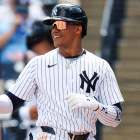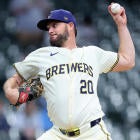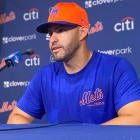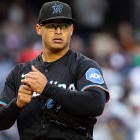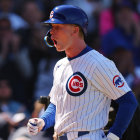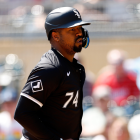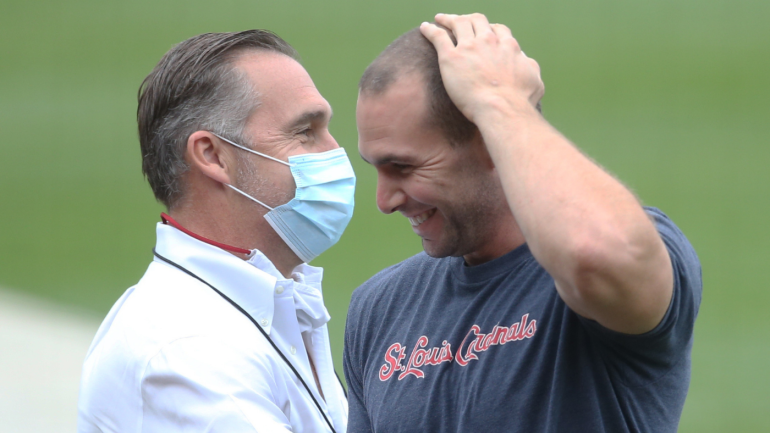
In some ways, that the Cardinals managed a winning record in 2020 is a notable achievement. The roster was ravaged by an early COVID cluster and was forced to play an absurdly compressed schedule down the stretch. In other ways, though, that mere adequacy mirrors the merely adequate level of investment that went into the 2020 team. It also heralds what figures to be another underwhelming offseason for the Cardinals and their fans.
That expectation leads to three key questions for the Cardinals as we head into the meat of the offseason and draw closer to Opening Day 2021.
1. Will ownership spend?
The Cardinals this offseason may be one of the many teams shifting to austerity mode. For a long time, clubs have looked for any excuse to keep payroll down, and the COVID-19 pandemic, which whittled the 2020 regular season down to less than half its usual length and prevented fans from attending games for almost the entire year, gives them even more cover. Speaking of which, team president of baseball operations John Mozeliak recently said this about the lack of paid attendance in 2020:
"Obviously, the success of the Cardinals the last 20 years has been our gate revenue. I do think we might be more negatively affected than others."
That's a tell, and so was the Cardinals' baffling decision to decline Kolten Wong's eminently reasonable $12.5 million option. When you claim to aspire to contention you don't pass up the opportunity to retain perhaps the best defensive second baseman in the game who's also a solid on-base threat. Yes, the Cardinals subsequently floated that they hope to sign Wong to a multi-year extension, but that's yet to bear fruit and Wong suitors are forming a queue.
All of this seems like a wild overreaction to a one-off set of circumstances by a team that typically enjoys strong revenues. As well, their current commitments are quite modest. For 2021, they have around $110 million in guaranteed salary on the books, and MLB Trade Rumors estimates that the Cardinals will be on the hook for less than $10 million in arbitration-eligible salaries. Most years, that would mean, oh, $40 million or so of spending room -- i.e., enough to afford one of the tip-top free agents. This winter, though, it seems unlikely that the Cardinals will approach their typical spending levels.
Obviously, that means it's unlikely they're in the mix for premium free agents like J.T. Realmuto, George Springer, Trevor Bauer, and DJ LeMahieu, even though each would be a fit (in Realmuto's case, that's assuming that Yadier Molina isn't brought back). It also seems like ownership isn't willing to foot the bill for a Nolan Arenado trade despite fresh circulation of rumors to that end. As well, there's probably no willingness on the part of ownership to re-sign all of their outgoing free agents -- Wong, Molina, Adam Wainwright, Brad Miller, and Matt Wieters. So if the Cardinals are going to manage a third straight trip to the postseason, then they'll need to hope for internal improvements -- or, failing that, a large playoff field once again.
This will be most acutely felt when the Cardinals are batting. We'll address two hitters of particular note below, but consider the remainder. If Wong doesn't come back, then Matt Carpenter and Tommy Edman will both be pressed into regular duty. Neither projects as an asset at the plate in 2021. The same goes for right fielder Dexter Fowler, who'll be 35 and who has an OPS+ of 86 over the last three seasons. Catcher would be another lineup trouble spot regardless of whether it's Molina or Andrew Knizner doing the heavy lifting. And what if there's a DH in the NL again? Maybe that leads to a Brad Miller reunion, but it's hard to envision a bolder move than that given the early tones struck by Mozeliak.
2. Are Goldschmidt and Carlson enough?
The Cardinals in the last two seasons have ranked 10th and 12th among National League teams in runs scored per game and 12th and 14th in slugging percentage. Obviously, the Cardinals despite those deficits with the bat have managed two playoff berths and a division title thanks to standout pitching and defense. However, the margins have been thin, and it's going to be difficult for the Cardinals to win the World Series during the current window of contention without a more potent offensive attack.
Assuming St. Louis isn't going to be particularly active at the top of the free agent market, where can they turn for improvement? Eyeball the lineup, and it's clear the best hope for a true fulcrum lies in the Paul Goldschmidt-Dylan Carlson tandem. Goldschmidt is of course the historically productive veteran who enjoyed a bounce-back campaign in 2020. Carlson is the lavishly gifted young phenom who appeared to find a higher level late in the season. Goldschmidt is the Cardinals' established No. 3 hitter, and the switch-hitting Carlson became Mike Shildt's cleanup hitter for the final game of the regular season and held onto that spot during the Wild Card Series against the Padres. The expectation is that Goldschmidt and Carlson will be the 3-4 tandem in 2021.
As for Goldschmidt, the question is whether what he did in 2020 truly portends better days ahead. In 2019, his first season in St. Louis, Goldschmidt remained productive but hit well below his established standards. Given that he was a first baseman in his thirties, it was fair to wonder whether decline had set in. Decline for great hitters like Goldschmidt, however, is rarely a linear affair, and in the abbreviated 2020 season he resurged with a slash line of .304/.417/.466. That's good for an OPS+ of 142, which is substantial improvement over his 2019 mark of 115 and right in line with career norms.
On the one hand, Goldschmidt showed improved plate discipline (he was of course an already disciplined hitter). He posted one of the highest walk rates of his career, and he struck out in just 18.6 percent of his plate appearances, which is the lowest strikeout percentage of his career. As well, Goldschmidt seemed to focus on more of a line drive approach in 2020. His average launch angle dropped significantly relative to prior seasons, and he posted the highest "sweet spot percentage" of his career. Yes, his average exit velocity dipped, but overall his batted-ball metrics back up his overall production. He's 33 now, so resumed decline in 2021 is possible. The outcomes of 2020, however, suggest that Goldschmidt has been temporarily renewed, albeit in a somewhat different form. If his high-average, high-OBP, power to the gaps formula persists, then he's going to be the No. 3 hitter the Cardinals need.
No less vital is that Carlson continues his ascendancy. While he struggled to start his big league career in 2020 and had disappointing numbers overall, Carlson improved as the season wore on. As well, early after his call-up he was victimized by a run of bad luck on batted balls. Carlson was demoted to the alternate training site but returned to St. Louis for the latter half of September. Combine his regular season numbers after that point with his performance against the Padres in the playoffs, and Carlson had a line of .289/.389/.578 over his last 54 plate appearances. That's a minuscule sample size, but it's enough to countervail his struggles earlier in 2020. And lest we forget, he was a 21-year-old getting his first ever taste of pitching at the highest level and doing so in the midst of a global pandemic without the benefit of a normal ramp-up to the season.
This isn't just idle optimism, by the way -- Carlson genuinely has a high ceiling. He's a former first-rounder who in 2019 authored an OPS of .914 at the Double- and Triple-A levels with 26 home runs, 28 doubles, and 20 stolen bases in 126 games. That bust-out made Carlson a top-10 prospect on a number of lists, and the expectation is that he'll eventually settle in at the high level he flashed down the stretch last season.
The Cardinals need both of these things to happen -- for Carlson to take the next step in 2021 and for Goldschmidt not to resume the decline he showed in 2019. If those things happen and they're paired with average-ish production elsewhere in the lineup, then the Cardinals could have a respectable offense for the first time since 2018.
3. What about pitching depth?
Pitching depth has been the coin of the realm in St. Louis over the last handful of seasons -- most especially 2020, when they were tasked with playing 53 games in 44 days -- and that again figures to to be the case again in the season to come. Again, that's a good thing since ownership probably isn't going to bolster the roster to any significant extent.
Even if Wainwright inks elsewhere or opts for retirement and even considering that Dakota Hudson won't pitch in 2021 after undergoing Tommy John surgery, the rotation figures to be in good shape:
- Jack Flaherty, RHP
- Kwang Hyun Kim, LHP
- Carlos Martinez, RHP
- Austin Gomber, LHP
- Miles Mikolas, RHP
Should injury or ineffectiveness strike, then Daniel Ponce de Leon, Jake Woodford, and Johan Oviedo can provide depth. Also, top pitching prospect Matthew Liberatore may be ready for the highest level at some point in 2021.
On the bullpen front, the Cardinals will welcome back Jordan Hicks, the hardest thrower in the majors, after he underwent Tommy John surgery and then opted out of the 2020 season. He's added to a high-leverage group that already includes Andrew Miller, Giovanny Gallegos, Alex Reyes, Genesis Cabrera, and Ryan Helsley. Potentially, that's the best bullpen in the National League.
That's the good news for the Cardinals -- that the pitching figures to remain a strength. The question is whether they'll score enough runs to take advantage of the run prevention. As presently constructed, this is a team that should top out with a win total in the low to mid 80s while also lugging around collapse potential.
Either outcome will be an indictment of ownership's unwillingness to address weaknesses despite playing in a thoroughly winnable division.
















